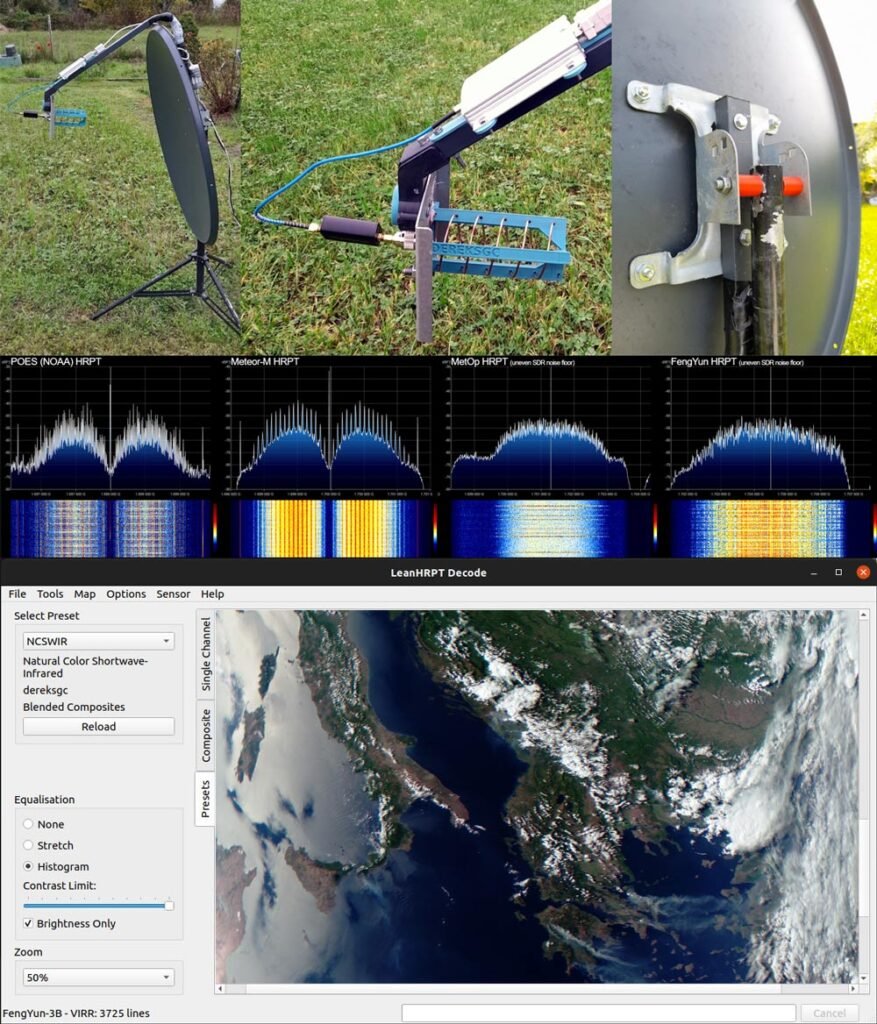Over on his blog Derek (OK9SGC) has recently uploaded a very comprehensive beginners guide to receiving HRPT weather satellite images. HRPT reception can be a little daunting as it requires a good L-Band dish setup which involves choosing and building a feed, and importantly, a way to track the satellite with the dish as it moves across the sky. Tracking can be achieved manually by hand, but that can be very difficult and so a motorized tracking mount is recommended.
This is unlike the much easier to receive NOAA APT or Meteor LRPT satellite signals in the VHF band which can be received by a V-dipole antenna, or the geostationary GOES HRIT satellites that can be received with a WiFi grid dish and LNA. Both of which do not require tracking.
The advantage of HRPT however, is that you end up with high resolution, close-up, and uncompressed images of the earth. For example Derek notes that NOAA APT gives 4km/px resolution, and Meteor LRPT gives much better 1km/px resolution but it is heavily compressed. Whereas HRPT gives peak resolutions of 1km/px uncompressed. There are also nine satellites in operation sending HRPT, so there are more opportunities to receive.
Derek has created a very comprehensive beginners guide that covers almost everything from purchasing and building the hardware, to finding and tracking the satellites, to setting up the software and decoding images. He notes that an RTL-SDR can be used as the receiver, and that a WiFi dish with GOES SAWBird LNA can work, although the difficult tracking requirements are still there so a smaller offset dish with custom helix feed might be preferred. Derek also provides useful tips, like the fact that the NOAA15 HRPT signal is quite a lot weaker than others.

